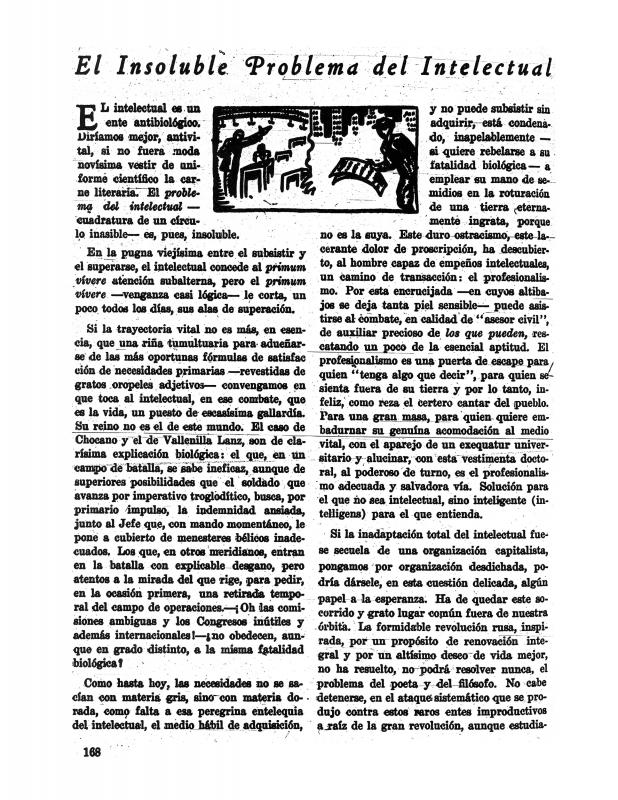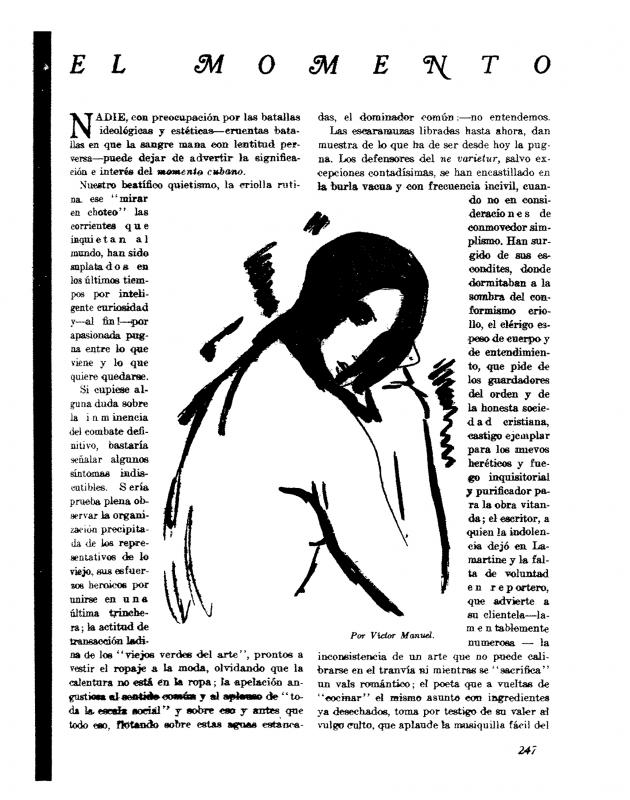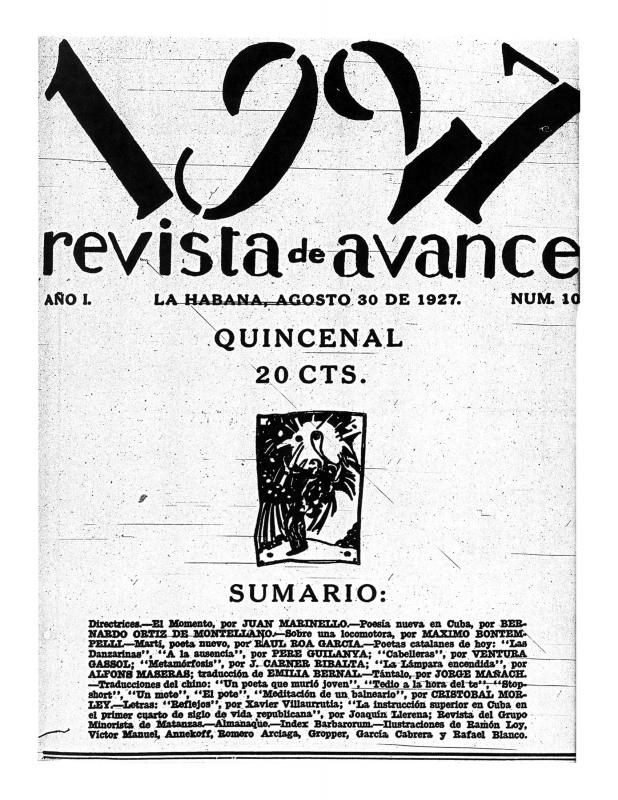The Cuban painter and printmaker Eduardo Abela Villareal contributed to Revista de avance and was a member of the Grupo Minorista. In May 1927, along with Gattorno, he signed two of the sections that refer to the visual arts in the “Declaración” issued by the Grupo Minorista. That declaration served as a manifesto, since it defined the ideology shared by the artists of the whole generation. Abela graduated from the Academia de San Alejandro in 1921, and that year, he traveled to Spain. In 1924, he returned to Havana, where he presented several individual exhibitions and worked with cultural publications, including avance. In 1927, he headed off to France, where he found a sizable group of Cuban artists and writers; these included Alejo Carpentier, who encouraged him to paint Cuban themes. In France, Abela came into direct contact with the most recent art trends, finding inspiration in the work of Jules Pascin and Marc Chagall. By then, Abela was already addressing Afro-Cuban themes in his paintings and drawings. Upon his return to Havana, he began to develop political caricatures, creating his most famous character, El Bobo, which he used to criticize the Gerardo Machado government. Abela’s style can be characterized by its variety and sense of experimentation. In 1937, Abela founded the Estudio Libre de Pintura y Escultura, which was not active for long. During its short life, however, this studio laid the foundation for reforming the art education system. In Abela’s ideas, there are points of contact with the ideas that are apparent in a number of avant-garde manifestos, which emphasize the artist’s creative process as a fundamental relationship between the senses and the emotions. Tristán Tzara’s Dadaist manifesto and André Breton’s Surrealist manifesto follow similar lines of thinking. [For other essays and texts published in Revista de avance, see the following in the ICAA digital archive: “Índice del Tomo I (Números 1 al 12 inclusive)” (anonymous) (doc. no. 1300106); by Martí Casanovas “Almanaque” (doc. no. 1299709), “Almanaque: Exposición Gattorno” (doc. no. 1298711), “El capitalismo y la inteligencia” (doc. no. 1299384), “Nuevos Rumbos: La exposición de ‘1927’” (doc. no. 1280155), and “Pierre Flouquet” (doc. no. 1299881); “[El arte nuestro debe ser instintiva o intuitivamente americano...],” by Víctor Andrés Belaúnde (doc. no. 832310); “[Basta con que revele una honda...],” by Carlos Préndez Saldías (doc. no. 832258); “Causerie sobre el Salón de Bellas Artes,” by Adia M. Yunkers (doc. no. 1298799); “[Creo que el artista americano...],” by Ildefonso Pereda Valdés (doc. no. 832328); “Dibujos escolares” (anonymous) (doc. no. 1299805); “Diego Rivera,” by Alejo Carpentier (doc. no. 1299962); “Eduardo Abela: pintor cubano,” by Adolfo Zamora (doc. no. 1280283); by Juan Marinello “El insoluble problema del intelectual” (doc. no. 1299897), and “El momento” (doc. no. 1125671); “El prejuicio en el ritmo intelectual de las épocas,” by Francisco Ichaso (doc. no. 1299741); “El problema internacional de Centro América y Cuba,” by Fernando de los Ríos (doc. no. 1300090); “La cuestión del negro” (anonymous) (doc. no. 1280299); “La lección de Juan Gris,” by Juan Gris (doc. no. 1299946); “Marrozzini y la mediocridad: notas sobre declaraciones de Luigi Marrozzini,” by Lorenzo Homar (doc. no. 861634); “Martí: Poeta Nuevo,” by Raúl Roa García (doc. no. 1300003); “Nacionalismo y Costumbrismo,” by Severo García Pérez (doc. no. 1300058); “Nacionalismos en América,” by Eugenio d’Ors (doc. no. 1299757); “Nota de los 5—2,” by Jorge Mañach et al. (doc. no. 1299930); “Programa de criolledad,” by Félix Lizaso (doc. no. 1125414); and “Vértice del gusto nuevo,” by Jorge Mañach (doc. no. 832383)].












